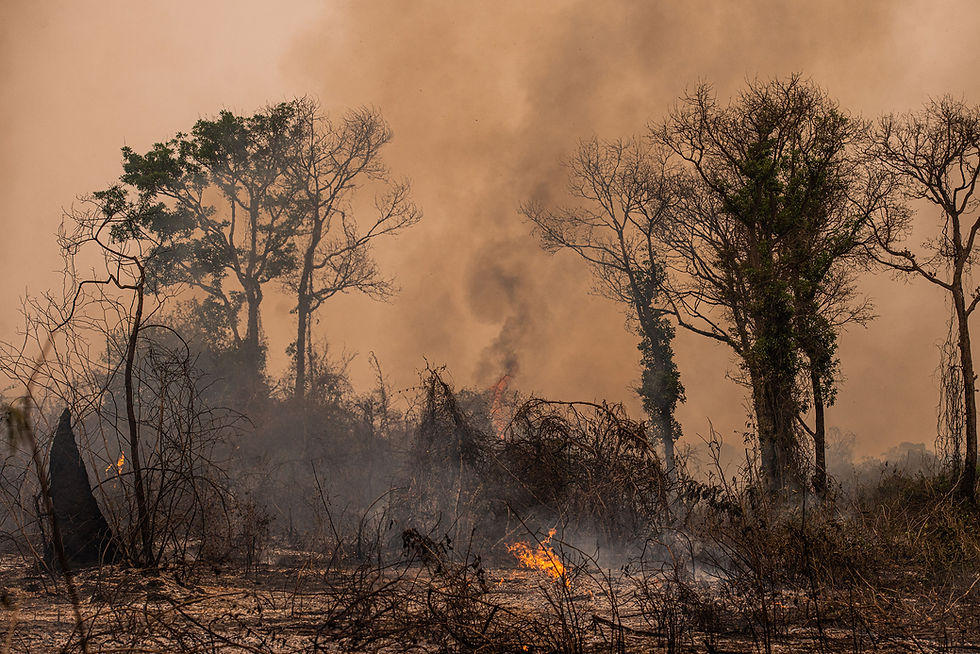Scenario Planning for Climate Risk: What Every Board Needs to Know
- Osho Awli
- Jun 9
- 3 min read
Understanding physical and transition risks — and why climate scenario planning must become a boardroom priority.

Climate risk is no longer a distant concern — it’s a board-level issue today. From supply chain shocks to stranded assets and regulatory tightening, the impacts are real and accelerating. Yet many boardrooms still struggle to move beyond disclosure and into forward-looking strategy. Climate scenario planning helps fill that gap — translating uncertainty into insight, and risk into readiness.
Understanding the Two Sides of Climate Risk
Climate risk is often misunderstood as purely environmental or reputational. In reality, it represents two distinct — but deeply connected — categories of risk that shape business continuity, value, and resilience:
Physical Risk: These are direct impacts from climate change — such as floods, droughts, extreme heat, sea-level rise, or wildfires. Physical risks can damage infrastructure, disrupt operations, and affect access to water, raw materials, or labour. Their effects are uneven across geographies and sectors but are already material in Southeast Asia.
Transition Risk: These arise from the economic, policy, and market shifts as we move toward a lower-carbon economy. Think: carbon pricing, changing consumer preferences, regulatory mandates, or the cost of switching technologies. For example, companies reliant on fossil fuels or non-compliant supply chains could face steep financial and reputational penalties.
Both types of risk carry real financial implications — and both are increasingly integrated into investor due diligence, insurance pricing, and lending terms.
Why Scenario Planning Matters
Unlike static risk assessments, climate scenario planning enables organisations to explore how different climate futures might impact their operations, value chains, and business models over time.
Scenario planning is not about predicting the future. It’s about preparing for it — by modelling a range of plausible outcomes and identifying strategic responses.
Frameworks like TCFD (Task Force on Climate-related Financial Disclosures) now encourage — and in some markets, require — companies to disclose how they assess and manage climate-related scenarios. And with the adoption of ISSB standards on the horizon in many regions, this practice will only become more central.
The Role of the Board
Boards play a critical role in ensuring that climate risk isn’t siloed in sustainability teams but embedded in enterprise risk management (ERM) and strategy.
Yet in many Malaysian and regional companies, climate scenario planning is either absent or delegated too far down the organisation. That creates three risks:
Lack of oversight: Climate risks are strategic — they affect capital, growth, and governance.
Short-term bias: Without long-term scenarios, boards may fail to plan for disruptive transitions or compounding risks.
Weak signals: Boards miss early indicators of risk exposure — such as rising insurance premiums, customer demands, or asset vulnerability.
Here’s how boards can take climate scenario planning from concept to credible action:
1. Clarify Risk Ownership
Ensure climate risk has board-level visibility, with clear accountability across risk, finance, and sustainability leads. Set the tone that climate risk is enterprise risk.
2. Start With Material Exposure
Identify which physical and transition risks are most relevant to your business model. Use climate models, location data, and supply chain mapping to understand exposure — not just emissions.
3. Use Scenarios to Stress-Test Strategy
Apply 2–3 well-recognised climate scenarios (e.g. IEA Net Zero 2050, NGFS pathways) to evaluate how key business drivers may change under each future. What happens to operating costs, asset values, or input prices?
4. Link to Enterprise Risk and Planning Cycles
Integrate scenario findings into your ERM, capital planning, and strategic forecasting processes. Scenario planning should inform decision-making — not sit in a separate sustainability report.


Comments